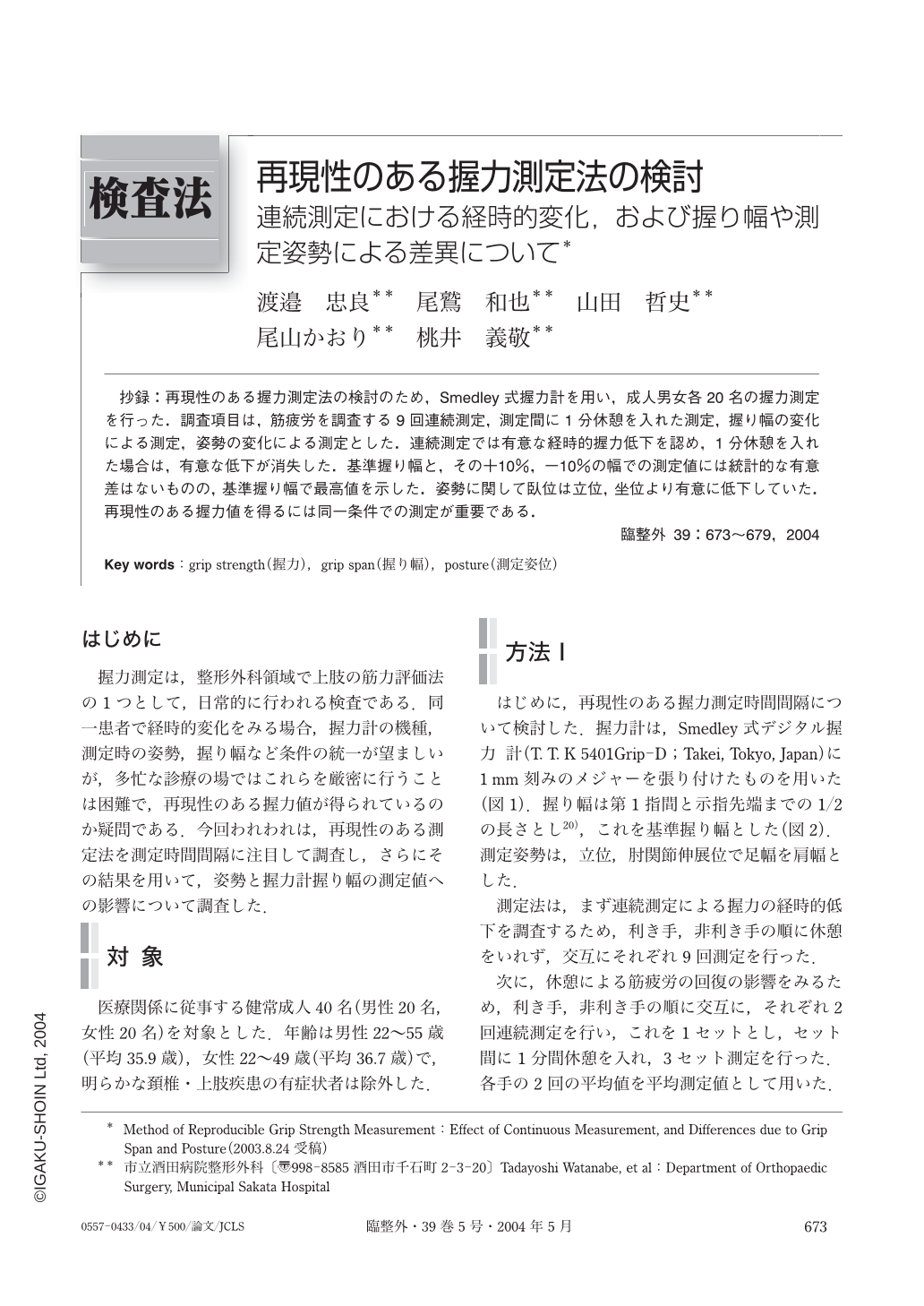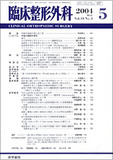Japanese
English
- 有料閲覧
- Abstract 文献概要
- 1ページ目 Look Inside
抄録:再現性のある握力測定法の検討のため,Smedley式握力計を用い,成人男女各20名の握力測定を行った.調査項目は,筋疲労を調査する9回連続測定,測定間に1分休憩を入れた測定,握り幅の変化による測定,姿勢の変化による測定とした.連続測定では有意な経時的握力低下を認め,1分休憩を入れた場合は,有意な低下が消失した.基準握り幅と,その+10%,-10%の幅での測定値には統計的な有意差はないものの,基準握り幅で最高値を示した.姿勢に関して臥位は立位,坐位より有意に低下していた.再現性のある握力値を得るには同一条件での測定が重要である.
Purpose:This study investigated the short-term reproducibility of grip strength measurements and the effects of posture and grip span. Method:Forty healthy subjects (20 men and 20 women;mean age 36 years;range 22-55 years) were evaluated. Grip strength was measured with a Smedley dynamometer twice as a single set, and the mean value for each hand was recorded. First, three sets of measurements were performed, without interruption, and with a one-minute rest between each set. Next, measurements were performed with the subject in three different postures:standing, sitting, and supine. Finally, measurements were performed with three types of grip span:the standard type, i.e., halfway between the index finger tip and 1st web (standard), +10% of the standard, and -10% of the standard. Results:When the measurement were performed without interruption, grip strength (kg) decreased gradually with the number of sets, whereas when measured with intervals between them there were no differences between sets. The Grip strength in supine posture was significantly decreased compare to in standing and sitting posture. Among the three grip spans, maximum strength was obtained with the standard span, none of the differences were statistically significant. Conclusion:The results of our study demonstrate that measurement of grip strength with a one-minute rest between sets yielded constant values. The influence of posture and grip span should be considered to maximize data accuracy and different posture and grip span could effect on maximum grip strength.

Copyright © 2004, Igaku-Shoin Ltd. All rights reserved.


